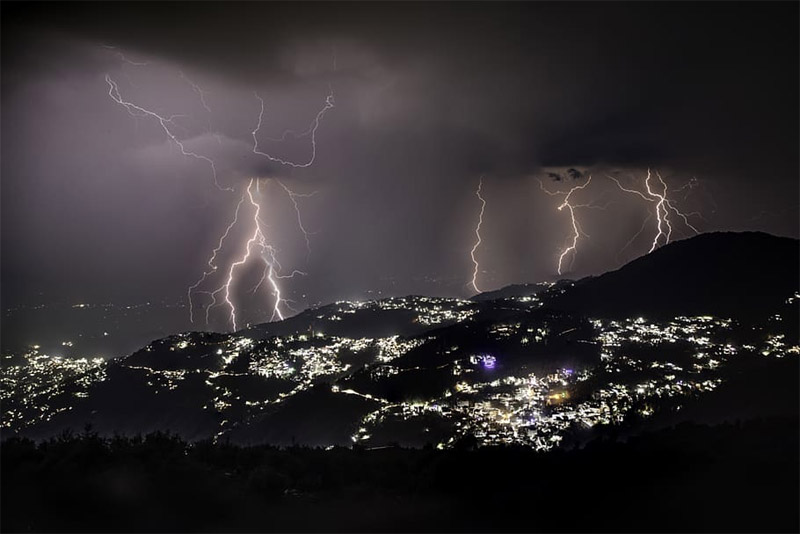A strong thunder always certainly scares and shakes you for a moment. Nothing to be ashamed of because it is a basic human instinct to be scared of loud noise. But what creates the loud noise that scares you and why does it thunder during a thunderstorm? Let’s find out.
In easy terms, the thunder is a result of lightning. The lightning creates a so-called lightning channel in which extremely high temperatures develop within a few millionths of a second. This causes the air to explode and it thunders. A flash is extremely fast. It only takes a few thousandths of a second to hit a tree or roof from a cloud. One can have the impression that the thunder that then follows is generated directly by the lightning itself.
When lightning strikes the earth from a cloud, a so-called pre-discharge creates a lightning channel. Shortly before it reaches the earth, a catch charge is generated there, which runs counter to the pre-charge. This closes the lightning channel and full lightning discharge begins. In the center of the lightning channel, the air is heated to around 27,000 to 30,000 degrees Celsius within a few millionths of a second. This is so short that the heated air has no time to expand during the flash. It is therefore in a state with very high pressure, about 10 to 100 times higher than in the normal state. This compressed air then explodes at supersonic speed in the form of a shock wave outwards, out of the lightning channel, in all directions.

After the main discharge, up to 40 partial discharges can follow within a thousandth to a hundredth of a second. The same effect of the explosive shock waves in the air also happens when there is lightning between clouds which is the most common form of lightning and happens around 80 percent of the time.
Why does it thunder during a thunderstorm?
The thunder spreads at the speed of sound which is 330 meters per second. So it is much slower than the flash of light that becomes visible at the speed of light. Therefore, it can usually only be heard afterward, unless the lightning strikes in the immediate vicinity of the observer.
The cause of the lightning discharges is electrical voltages between clouds and earth or clouds and other clouds of some 100 million volts. They generate currents of up to several 100,000 amperes in the flash channels, which causes the flash channel to heat up enormously.
The voltages are generated by the separation of positive and negative electrical charges within storm clouds. Here moist warm air masses, ice particles, and water droplets play the main role. As a result, positively charged ice particles accumulate at the top of the storm cloud, with a negative charge center of water drops opposite them at the bottom. The positive counter-charge then arises on earth through electrical induction.

Since the electrical discharge of the clouds favors the shortest route to the ground, the lightning can usually be seen coming vertically from above. Since we are usually on the ground, we hear the shock waves from the end of the lightning channel first, followed by the crashing of the subsequent shock waves from above. The situation is different when a lightning bolt runs at a roughly constant distance from the observer because then the shock waves can reach him at about the same time and thus generate the well-known thunder bang.
Lightning doesn’t always follow a single channel and often splits into several channels. The thunder noise changes with this, because then several lightning channels send out shock waves, which can also reflect on each other and thus generate a series of thunder with lower volume in the form of a grumble.
Also Read – How Is Fog Formed? What Causes Fog In The Morning?
Now you know, why does it thunder during a thunderstorm. Next time when you hear a thunderstorm or your children get scared by it, don’t forget to explain the reason behind the god’s anger.


